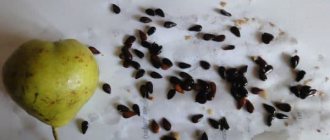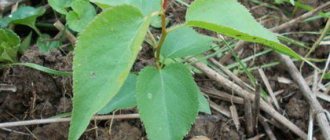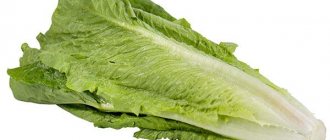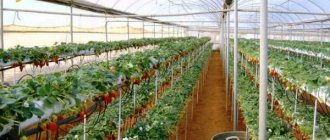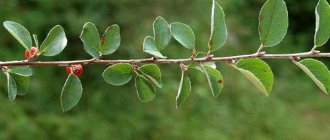Description of the plant
Dogwood is either a shrub or a small tree - the size depends on the place of growth. The plant of the Dogwood family is long-lived - it can grow and bear fruit for up to 300 years.
The height of the plant reaches 2-5 meters, and the girth of the trunk is 5-45 cm. It is easier to grow a bush in the garden, since to grow a tree yourself you will have to form a crown. The plant is completely unpretentious, grows well in the sun and in the shade. Dogwood is frost-resistant. The shrub does well in any soil, but it is best on light, fertile and well-drained soil.
Dogwood begins to bloom in early spring, as soon as the air warms up to +5-10 degrees. For more than two weeks the bushes are covered with bright yellow beautiful flowers. It bears fruit every year, without interruption, the fruits ripen in August. From one bush you can collect from 20 kg of fruits; the older the plant, the higher the yield.
The berries are usually yellow, red or pink. They contain a huge number of useful components and have anti-inflammatory, diuretic and choleretic properties.
The plant has a powerful root system, going to a depth of up to one meter, while the main roots are located at a level of 50 cm from the soil surface.
Features of germination of dogwood seeds
The easiest way to plant a dogwood is to dig up the root shoots and shoots and plant them. You can use the cutting method. But if it is impossible to find exactly this planting “material,” you can also practice growing dogwood from a seed. Dogwood seeds have a low germination rate, about 60%, so to be safe, you should plant several seeds at once.
Dogwood seeds are located inside the seed, which is present in the berry. There are one or two of them (sometimes even three are found). To extract seeds from fruits, they should be filled with warm water and the container covered with a lid. After a few days, the fermentation process begins in the container.
Now you need to rub the fruits with your hands to free the seeds from the pulp. A particular difficulty in preparing seeds for sowing lies in their prolonged stratification, otherwise germination will be zero. The seeds, washed under running water, should be mixed with sawdust and placed in a cold place for stratification for a year and a half.
Another way to treat seeds with cold is to put the seeds in soil made from a mixture of sand and humus, bury them and keep them for 2 years.
Fence the planting area so as not to plant anything there or accidentally dig up seeds along with weeds.
Therefore, carefully pull out the weeds with your hands or cut them at the root with a knife. After two winters, in early spring, dogwood sprouts will appear in this place. All summer you need to take care of them: water and loosen them, and by autumn the sprouts form strong bushes.
How to grow dogwood from seedlings?
It is important to know how to grow dogwood from a seed so that it has good germination. Before sowing seeds for seedlings, they need to be thoroughly warmed up by placing them closer to the radiator. They begin the process at the end of February, so that a week later, that is, at the beginning of March, they are planted in a box with soil.
The soil mixture is made from fertile soil, humus and sand, taken in equal volumes. After sowing the seeds, cover the box with a dark film and place it in a warm place, after watering it. As soon as the sprouts appear, remove the film and place the box on the windowsill. Ready seedlings are planted on the site when warm weather sets in. The soil under the sprouts is sprinkled with sawdust, and the first time is weeding and watering.
Detailed description of growing dogwood from seeds, caring for seedlings
To grow dogwood from a seed, you need to know how to do it correctly. The whole process consists of several stages:
- First, take the seed out of the fruit, fill it with warm water and cover it with a lid. This starts the fermentation process. After a few days, the seeds are removed from the fruit by hand, washed with water, sprinkled with sawdust and stored in a cold place for a year and a half.
- Before sowing, the seeds are heated near a radiator from the end of February for about 6-7 days.
- The soil should consist of fertile soil, compost and sand in equal proportions. Containers with planted seeds are watered, covered with dark film and placed in a warm place.
- After the first shoots appear, remove the cover and move it to lighted window sills.
- Underground seedlings are transplanted to a permanent place after all the frosts have passed and truly warm weather has set in. The soil under the young shoots is covered with sawdust, watered and often loosened to allow air to reach the roots.
- After stratification, the seeds are planted immediately in the ground to a depth of 3 cm in early - mid-May.
- To insulate and create favorable conditions, the area with the seeds is covered with plastic film. Remove the cover after germination.
In summer, young shoots require careful care: they must be protected from direct sunlight, watered and loosened.
For the first winter, the plants are insulated with humus mulch, and spruce branches or fallen leaves are laid on top. In the spring, they get rid of the shelter gradually: first, remove the top layer, and a week later - the second.
Planting seeds in open ground
After stratification, the seeds can be planted directly in open ground. This is possible only at the beginning of May, so that there is stable warmth. In the area allocated for dogwood bushes, it is necessary to make grooves to a depth of 3 cm and place the seeds in them.
In order to create the greenhouse effect that the seeds require for good germination, the area with the crops will have to be covered with film, then the soil will not dry out. You can remove it after the dogwood sprouts appear. In the summer, it is necessary to care for the sprouts, protect them from drying out and excess moisture, and cover them from the sun, because by autumn the bushes must become strong so that wintering passes without complications.
In the first winter, dogwood bushes should be insulated with humus at the very roots. Here, in addition, you should use foliage or spruce branches, which are used for insulation on top of the humus. In early spring, you must first remove the upper part of the shelter, and after a few days, rake away the remaining insulation and free the entire bush.
Before the buds begin to swell, the grown bush can be moved to a permanent place of growth, where it will be sunny and spacious.
Although dogwood is unpretentious in terms of soil, it is better to plant it in fertile soil with good loosening. After planting the bushes, the soil must be mulched with sawdust, peat or mowed grass.
Since the main roots of the plant are shallow, it is necessary to provide the dogwood bush with regular watering throughout the summer. The shrub will do very well if planted in a slightly shaded area of the garden.
In addition to watering, care involves weeding and fertilizing. During the growing season, feed with nitrogen-phosphate fertilizers, and closer to autumn, introduce potassium fertilizers, such as wood ash. Sometimes you can use humus or compost. Dogwood also requires calcium, so it should be fertilized with lime.
Plant pruning
Proper cultivation of dogwood requires systematic pruning of the plant. During winter or early spring, it is necessary to trim damaged, frostbitten and dry branches from the bush so that they are not attacked by pests or affected by fungus.
When cutting branches with garden shears, they must be dipped each time in a bleach solution in a ratio of 1:3. This is required to prevent the transfer of diseases from possibly infected branches to healthy ones.
It is also important to cut back to the roots or simply shorten old branches to allow new shoots to emerge. Branches and shoots growing inside the bush are also cut out. If the dogwood is grafted, you will have to cut off all the shoots that have grown below the grafting site. If a bush or tree has a natural beautiful crown, then you should not form it yourself.
Dogwood care
How to grow dogwood in the garden
Planting and caring for dogwood is not much different from planting and caring for any other fruit shrub - rose hips or barberry, for example. Caring for dogwood consists of watering, loosening the soil on the site, removing weeds from it, pruning the shoots of the plant and fertilizing.
The peculiarity of dogwood is that there is no periodicity in its fruiting, that is, it produces a harvest annually. The planting of the next year's crop is carried out in May-June of the current year, and before the end of the growing season, the flower buds that form simultaneously with the growth of shoots must be completely formed. This is why it is so important to water and fertilize dogwood in a timely manner. To ensure that water does not spread over the area, but is directed to the superficial root system, make a circular furrow around the bush and pour water into it.
Try to maintain a balance in hydrating the dogwood: there should be enough water, but excessive watering is unacceptable. After watering, the soil in the area is loosened no deeper than 8-10 cm, while getting rid of weeds. As for fertilizing, in the first half of the season they use fertilizers with a nitrogen-phosphorus component, and in the second they focus on potassium - for example, they add wood ash to the soil. Dogwood responds well to compost and humus, but the most important thing for dogwood growth and fruiting is the presence of calcium in the soil - keep this in mind.
Dogwood pruning
Growing dogwood requires regular pruning of the bush. In winter or early spring, during the dormant period, remove from the bush all damaged, dry and frostbitten branches that are easy prey for fungi or harmful insects. Before cutting a branch, dip the scissors in a 1:3 bleach solution to avoid transferring pathogens that may have settled on the dogwood to healthy branches.
Shorten or prune stems that are too old to the ground to encourage new growth. Cut out branches and shoots growing inside the bush. If your bush is grafted, remove all shoots below the grafting site. You most likely will not have to do formative pruning, since the plant has a natural, beautiful crown.
Pests and diseases of dogwood
As a rule, dogwood is not affected by pests or diseases. But sometimes, extremely rarely, the plant suffers from the fungal disease rust, which appears as yellow spots on the leaves. The fungus is destroyed by treating the plant with Bordeaux mixture. Dogwood is also rarely affected by powdery mildew, which is combated with colloidal sulfur, as well as spotting, against which dogwood is treated with the same Bordeaux mixture. Among the pests that can disturb the dogwood are the cochlear scale insect and the multicolored caterpillar - the first is destroyed by treating the plant with lime, and the second with Parisian greens.
Dogwood in the Moscow region
For some reason, it is common to think that dogwood does not take root in Moscow and the Moscow region, but this is not true. Breeders have developed varieties of plants that can withstand thirty-degree frosts, so dogwood develops normally and bears fruit abundantly even in the middle zone. Planting and caring for dogwood in the Moscow region is no different from growing the plant, for example, in the Stavropol region or in Ukraine.
Sometimes, however, the ends of its young shoots freeze over in winter, so they have to be cut off in the spring. To avoid such unpleasant surprises, young dogwoods should be covered with burlap for the winter for several years, and the tree trunks of dogwoods, both young and adult, should be mulched for the winter with a thick layer of peat or humus.
Tips and tricks
Dogwood is a completely unique plant about which much is unknown. To make it easier to grow yourself, here are some interesting facts:
- It is better to plant early plant varieties, since the berries ripen in 2-3 months;
- Dogwood blooms very early, and its flowers are not at all afraid of frost;
- dogwood is frost-resistant - it can withstand up to -30 degrees without shelter;
the plant requires cross-pollination, so it must be planted in pairs, preferably of different varieties;
- the bush tolerates drought, hot winds and temperature changes well, but does not like flooding and close proximity to groundwater;
- It is necessary to plant dogwood no closer than 5 meters from other trees and bushes.
- grafted seedlings begin to produce a rich harvest in the fifth year of life, and ungrafted seedlings only in the 8th year.
Dogwood can be grown from seed - although this is a lengthy process, it is quite reliable.
Tasty and healthy fruits are suitable not only for jam and compotes, but also serve as a good healing remedy for many health problems.
Growing dogwood at home from a seed
The idea of growing dogwood from a seed usually comes to mind either to experimenters or to people who, for objective reasons, cannot acquire other planting material. It is most convenient to grow a tree from a seedling, but today even on domestic flights in Russia it is prohibited to transport live plants without the appropriate documents. The inspection when boarding an airplane has been tightened for a long time and it will not be possible to “smuggle” a seedling, especially since at least two different plants are needed. If there is no nursery within driving distance that grows dogwood, there is only one option left: seeds.
Is it possible to grow dogwood from a seed?
It is most convenient to grow dogwood from seedlings and cuttings purchased from a nursery with a good reputation. This is a guarantee of obtaining the desired variety, and not a mismatch. And sometimes a wild bush. But sometimes a gardener believes that a dogwood seedling, which will produce a harvest in a couple of years, is very expensive. Or there is simply no way to bring a full-fledged plant. Then there is only one way out: to grow dogwood from seeds.
Why dogwood is rarely grown in gardens
The idea of growing a bush from seeds has its advantages: the sprouts will be more adapted to a climate different from where the mother tree grew. Especially if the bones were brought to the northern region after a vacation in the south. But when growing dogwood from seed, there is one serious point that is usually forgotten.
If to grow dogwood at home it was enough to plant the seeds “according to the instructions,” this plant would be in almost every garden today.
When purchasing seedlings, the soil in which the trees grew remains on the roots. This is enough to introduce the necessary microflora into the soil at the new planting site. The seeds are sterile in this regard. To successfully grow them, you need at least a handful of forest soil from the place where the wild dogwood grows. Or from under a garden dogwood bush, if your friends have this plant somewhere.
But it’s not for nothing that there are no photos of dogwood sprouts on the entire Internet. Preparing and even germinating the seeds takes a long time, but is not difficult. But “photo and video reports on the further fate of the young plant” are completely absent. And this is now when taking a photo and sending it to Instagram is a matter of one minute.
The maximum that the experimenters could do was take a photo of dogwood seedlings in the initial stage, when germination still depends only on the nutrients accumulated in the kernel.
Therefore, it is possible to grow dogwood at home only if you add “native” soil to the pot in which the dogwood will be germinated. Or in the ground prepared for planting, if the seeds are planted directly into the ground.
If the necessary microflora is present in the soil, then three disadvantages appear:
- the seeds take a long time to germinate;
- The harvest will have to wait 8-10 years after the sprouts appear;
- from the seeds of varietal garden dogwood a “wild” will grow.
But if the cost of dogwood seedlings seems very high, and the seeds are still free, then you can always experiment. If it grows, it’s good; if it doesn’t grow, the gardener loses nothing.
How to grow in the middle zone
It is possible to grow dogwood in the middle zone, but you should not rely on the abundant harvests that the plant brings in the south. The problem is that, being a frost-resistant crop, dogwood blooms early, and spring return frosts can damage flowering. The plant has a protective reaction - when it gets colder, the flowers curl back into buds, but this only works for a short period of time.
Breeders have developed many varieties of dogwood (Artemiy, Nastya, Pavlusha, Samokhvalovsky) , which are approved for cultivation in all regions, but gardeners themselves should take care of protection from spring frosts. This can be smoke, fine-drip sprinkling, covering with non-woven protective materials (spunbond, agrin, lutrasil), if the size of the tree allows.
Sprinkling is carried out every 10 minutes 3-4 times when frost is forecast. In order to delay flowering, you can throw more snow into the tree trunk circles, which will preserve the snow cover under the tree for as long as possible.
Landing rules
When choosing seedlings for your garden, you should give preference to zoned varieties, since plants grown in the south may freeze in the first winter. It should be remembered that dogwood is a self-sterile crop and you need to plant 2-3 plants nearby that bloom at the same time.
When planting dogwood, it should be taken into account that the plant grows slowly in the first 2-3 years - the growth is 30 cm. By 10-15 years, the trees reach their maximum size: 3-4 m in height, crown diameter - 3 m.
Did you know? The Latin name for dogwood is Cornus mas, which means “common dogwood” and can also be translated as “male dogwood.” This name emphasizes the strong wood and endurance of this species.
Selecting a location
The easiest way to decide where to plant dogwood in your garden plot is to closely mimic the environment in which it grows naturally. This unpretentious crop can grow in open ground on any soil and with different acidity levels. But to get good harvests, it is advisable to choose the planting site more carefully.
It should be in full sun or partial shade with afternoon shade, and protected from winds.
It is necessary to exclude areas in hot and dry places, as well as low-lying places where rain or melt water accumulates. Dogwood does not tolerate soil compaction where there is not enough oxygen for the root system. Since dogwood blooms early, it is better to plant it in elevated areas, along the banks of reservoirs and on the slopes of ravines - cold air masses accumulate in the lowlands and are blown out from there, and warmth remains around the plant, which serves as protection from frost.
A good place would be a south-facing slope - it is in such places that dogwood most often grows in the wild . The soil of the site is moisture-absorbing, well-drained and rich in organic matter. The pH level of the soil is not particularly important, but neutral or moderately acidic limestone soils are preferable. In the middle zone, acidic soddy-podzolic and gray forest soils predominate, so they need liming to reduce the pH level.
How to grow dogwood
If, after all, it was decided to grow dogwood from a seed, work will have to be done to prepare the seed material. And first, decide which type of dogwood is best to use for planting. In the wild form of berries, the seed takes up a lot of space and the amount of pulp is insignificant. Garden varieties have large berries with a lot of pulp and a relatively small seed. But in absolute terms, the seeds of garden dogwood are larger than wild ones.
Preparing seeds takes a long time, if the gardener has not followed the path of “sticking unripe berries and soil, they will suddenly grow.” Therefore, you don’t have to worry about preparing the soil for planting for about six months.
Difference between garden and wild seeds
The idea of growing dogwood from seeds usually arises after purchasing fresh berries. Drying today occurs unnaturally, and at high temperatures in an accelerated mode. In this case, the embryos die.
The differences between garden and wild berries are clearly visible. But there are such differences between the bones:
- the seeds of garden varieties are objectively larger than those of a wild plant;
- the tip of the garden seed has a needle-sharp thorn, which is absent in wild seeds.
For comparison, photos of wild dogwood seeds.
And a photo of garden dogwood seeds.
Preparation of planting material
The embryo in the seed is formed much earlier than the fruits ripen. And this applies to any fruit and berry crops. Therefore, one of the simplest ways to grow dogwood from a seed is to bury unripe berries in the ground, mark this place in the garden and water it periodically. If the berries were buried in the summer, perhaps the shells will have time to rot, stratification will occur naturally in the winter and shoots will appear in the spring. Or they will germinate next spring. If sprouts do not appear in the first spring, you need to wait a year. At this time, you will have to carefully remove the weeds so as not to pull out the planted seed along with the weeds.
When purchasing a mature dogwood, preparation lasts for 1.5 years and requires mandatory seed stratification.
Method for obtaining planting material from ripe berries:
- the fruits are filled with water and left for several days until signs of fermentation appear;
- the water is drained, the pulp is mashed and thoroughly washed with water until peeled seeds are obtained;
- clean bones are dried, sprinkled with sawdust or sand and placed in the refrigerator;
- at the end of February, the seeds are removed from the refrigerator and left to warm up for a week;
- Before planting, the shells are either carefully sawed off or chipped off on a grindstone.
If it is not possible to file the shell, you should prepare for the fact that the sprout will appear only in a year. The soil will have to be kept moist for the entire 12 months so that bacteria can destroy the shell.
Everyone needs the miracle berry KORUS! How to grow from a seed?
Dogwood is considered a southern plant that grows in the southern regions, however, it has taken root well in the temperate zone. The value of dogwood berries lies in the high content of biologically active substances.
Dogwood is an early flowering shrub, so it is afraid of early frosts. Although dogwood is a self-fertile plant, it is rational to plant 2-3 plants, in this case the berry yield increases many times over. Unfortunately, dogwood does not take cuttings as well as other plants, and it also does not propagate by layering, so most of the seedlings that can be found on sale are dogwood seedlings. As a rule, seeds for planting seedlings are taken from the best specimens and inherit their good productive qualities from the mother plants. But this is also a plus, because several seedlings planted nearby will be slightly different from each other, and thereby pollinating each other will increase the productivity of each plant. To plant dogwood, find a bright, warm place, protected from the winds. Despite the fact that the dogwood culture has advanced far to the north, it still remains a southern plant and therefore prefers more comfortable, milder conditions. You can prune it if you think the plant is too tall, or leave it natural. In this case, you will get large bushes, abundantly loaded with berries. There are no particular problems with it; in the temperate zone, dogwood is practically not damaged by diseases or pests. This is another big plus, since in this case the plant does not require any chemical treatments against diseases and pests, which means that the berry products will not accumulate any harmful substances.
How to get a plant, how to grow them from seeds?
Many garden and fruit plants can be successfully propagated by seeds. These are dogwood, serviceberry, damson (in England they use it to make gin), cherry plum (common yellow or red, sometimes small-fruited, but tasty and healthy), hawthorn, a whole range of other plants, including honeysuckle is edible. And many other types of plants that do not yet have a large varietal diversity and are represented in our gardens mainly in wild or some improved forms.
There is one big advantage of propagating such plants by seeds. In the process of seed propagation, you may not get a plant that fully reproduces the maternal one, i.e. the one from which the seeds were removed. However, in the process of growing seedlings for 2-3 years, until you transfer them to a permanent place, you will be able to select frost-resistant forms as a result of natural selection, because non-frost-resistant forms will freeze out in the first year; forms that are immune to those diseases that are common in your area; forms that will be characterized by growth, tall, with large leaves that will show the characteristics of cultivated plants.
This formative process, which will take place on your site, will lead to the fact that you will select some of your own varieties, which will be maximally adapted to the conditions of your site and your area.
What needs to be done and how to organize this process?
It is necessary to collect ripe fruits, be it dogwood or any other plant. They need to be put in a plastic bag, tied and allowed to ripen, to reach a state of fermentation. Their readiness will be indicated by the fact that the fruits will soften, and already in the bag they will be easily crushed and the seeds will be released. Periodically opening the package, you will understand by the smell that yeast and alcoholic fermentation has already begun there and your fruits are completely ready to release seeds. Next, you need to wash these seeds from the pulp. Without drying it out - this is very important! - they need to be taken out of the sieve, put in a glass with sand and these seeds must be mixed well with the sand. Whenever this is done, at what time, you must moisten this sand and put it in the refrigerator, first tying it in a plastic bag. After autumn comes and the cold days arrive, this glass, right in this bag, should be buried in the ground (you can completely). In the spring, it’s worth digging out this cup and sowing the seeds together with the sand directly into the ridges. You can sow quite densely, because the germination rate of seeds of tree and shrub plants, unfortunately, is often not 100%, somewhere around 30-50%. This process is called stratification.
Stratification is necessary in order to awaken the seeds so that they germinate well. To prevent them from going into deep dormancy, they need to be sown with fresh, not overdried seeds.
If you grow Fuchsia, especially if you grow it outside, you may notice that some flowers set ovaries and form large dogwood-like, black berries filled with small seeds. If you ripen these Fuchsia fruits, you can also extract seeds from them and, without any stratification, sow the bowls with soil with fresh seeds. You will receive a huge number of seedlings. Moreover, these seedlings will produce plants that will not resemble the mother plant. And this is very interesting, because you will immediately get a wide variety of decorative forms of Fuchsias with different colors and shapes.
Transplanting dogwood seedlings into open ground: terms and rules
The pit with soil for replanting must be prepared approximately six months before the procedure so that the soil has time to settle. Dimensions of the pit: diameter 0.8-1 m, depth 0.8 m. The pit is filled with a mixture prepared for dogwood seedlings. In areas north of Voronezh, lime must be added to the soil. In more southern areas, they focus on the acidity of the soil and its calcium content.
Planting is done in late autumn, when the seedling goes into hibernation, or in the spring before the plants awaken. If an annual seedling grown from seed is planted in the fall, it is covered with insulating material. A young plant may freeze if the temperature is too low.
Since the dogwood sprout hibernates in winter, its planting in open ground can be postponed until spring. In this case, you need to start preparing the pit in the fall. The pot with the sprout should be kept in a cool place in winter, imitating natural conditions.
Dogwood wakes up early, so the seedling needs to be planted in late March - early April. It is better to replant the plant to a permanent place with a closed root system, that is, directly with a lump of soil from the pot. After planting, the seedling is covered with film in case of frost. Watering depends on the climate zone and weather forecast. If cold weather is not expected, you can shed the soil a little. If frosts are predicted, it is better to wait to water so that the roots do not freeze over.
In the future, caring for dogwood seedlings consists of loosening the top layer of soil, removing weeds and timely pruning of excess shoots if it is necessary to form a crown.
There is a high probability that even from a varietal seed a wild form of dogwood will grow. In addition, you will have to wait 10 years for the harvest. But it is better to graft a garden variety onto a wild rootstock. Varietal varieties take root much better on their wild “ancestor” than on trees of other species. And in this case the harvest can be obtained after 2-3 years.
Dogwood propagation methods
In botany, there are only two generally accepted methods of plant propagation, the so-called sexual and vegetative. In the first case, to obtain new specimens of the species, derivatives of pollination are used, which contain the common genetic material of the maternal forms (seeds). The second is based on growing daughter plants that genetically replicate the original bush (rooting parts of shoots).
Growing dogwood from seed
Seed germination is one of the most complex and labor-intensive processes of dogwood propagation. This is due to the fact that such biological material has low viability, so seed sprouts appear only under the most favorable conditions. At the same time, dogwood seedlings grow rather slowly and begin to bear fruit no earlier than 7 years after germination. That is why only breeders decide to grow shrubs using this method when breeding a new variety.
However, due to the lack of planting material, gardeners often decide to germinate seeds. For this, several green fruits are selected, devoid of any pathological changes and damage by infections and pests. Seeds are carefully selected from each berry, and then immediately sown in the ground in a permanent place. Before wintering, seedlings are provided with moderate watering and protection from weeds. The first shoots of such seeds appear no earlier than the spring of next year.
Did you know? Dogwood is one of the oldest fruit shrubs used by humans. Its beneficial properties were adopted about 5 thousand years ago.
You can also take ripe seeds for sowing, but you need to stratify them. The procedure involves damaging the dense skin of the seeds, which increases not only their germination, but also their growth energy. To perform the procedure, you should place small wood shavings in a small container, and then place the seeds in it at a depth of about 1–2 cm. Next, the container should be well watered and placed in a moderately lit place.
Video: Reproduction of dogwood from a seed
Maintaining high humidity, the seeds germinate for about 12 months, after which the young shoots need to be planted in separate containers with well-fertilized sandy loam soil. In such conditions, the plants should be kept for at least 1–2 years; as soon as the seedling lengthens to 10–15 cm, it can be successfully transplanted into the garden bed. The procedure is carried out around the end of April, and a distance between neighboring plants should be at least 20 cm.
Read, pear-shaped dogwood: benefits and harms, agricultural cultivation techniques.
Propagation by cuttings
Dogwood cuttings are carried out in two ways: with green or woody parts of the bush. The green cuttings are selected approximately in the first half of summer; they serve as the central part of annual shoots, about 10–20 cm long. A third of the foliage should be removed from the resulting fragments, after which the prepared material should be soaked in a solution of any growth stimulant (for example, the drug “Heteroauxin”) for 5–6 hours. Next, each seedling is planted in partial shade in loose and well-fertilized soil (about 5–6 kg of humus/1 m² should be added to the soil), ensuring moderate humidity.
Lignified parts of the bush are selected in late autumn, several weeks before preparing for wintering. The middle part of young shoots no more than 3–4 years old, abundantly covered with foliage (15–20 cm long), is suitable for this. Planting material is planted in the soil around mid-April; until this time it is stored in the refrigerator at a temperature of +5...+10°C.
Before planting, damaged and wilted foliage is removed from cuttings and then soaked in a solution of any growth stimulant for 5–6 hours. Lignified cuttings are planted in well-fertilized and loose soil; with moderate watering throughout the season, they will successfully take root by wintering.
Important! Only mature bushes, at least 7–10 years old, free from traces of damage by insect pests or specific infections, are suitable for taking cuttings.
Reproduction by grafting
Grafting (budding) is ideal for growing dogwood in those areas where this shrub occurs wild and often becomes a weed crop. In order to improve such a bush, it is enough to plant just a small fragment of the fruit species. This procedure is performed around August-the first half of September; spring grafting is considered ineffective.
The basic technology for budding has identical steps as grafting any fruit tree or shrub:
- A small fragment of the shoot should be cut from the scion along with a viable leaf bud (the main cut should be as smooth as possible). At the same time, for the procedure to be successful, at least 2–3 kidneys should be grafted.
- On the rootstock (wild shrub), you should select the healthiest young branch no more than 3 years old, and then create a small T-shaped cut on it approximately in the middle. This is done so that the lignified bark can be separated, leaving the core intact.
- After this, you need to carefully separate the bark from the wood with a stationery knife, and place the scion with a bud into the resulting “pocket” and secure the grafting site with adhesive tape.
- If the process goes well, the kidney retains its viability and does not wither. After this, after about 3 weeks, the adhesive tape must be removed.
- In the spring, a young shoot will begin to grow from the rootstock; it should gradually be cultivated, and all nearby ones should be removed. Thus, a central branch should form from the grafted bud, which will become the basis of the entire bush.
Reproduction by layering
This propagation method can be called one of the simplest ways to obtain a full-fledged garden in just a few seasons. Layers are obtained from young shoots no more than 2 years old; their tops must be buried to a depth of about 5 cm, and a small hill about 10 cm high must be poured on top. Rooting of the shoots occurs throughout the year; all this time, during the active growing season of the bush, the soil is regularly moistened.
As soon as the seedlings have formed a root system, the shoot is pruned and replanted, and a full-fledged cutting with a length of at least 25 cm should be formed. Bushes can be removed throughout the entire growing season, but the best time for this is the beginning of September, and for the procedure to be successful, at least 3–5 layers.
Did you know? Dogwood is on the list of fruits richest in vitamin C: just 300 g of berries can satisfy the body’s daily need for this substance.
Rules for planting and caring for dogwood in open ground
Dogwood is not often found in our area. But since this plant has unsurpassed beneficial properties, it is worth thinking about starting to grow it in your summer cottage.
Planting a dogwood and subsequently caring for it is not a complicated procedure at all, which even a novice gardener can do . This shrub is unpretentious, and at the same time has tasty berries.
Timing of dogwood ripening in the Moscow region, Krasnodar region and Ukraine
Dogwood prefers the warm climate of the Caucasus and Transcaucasia , where it grows in mountain forests, on sunny edges, as well as in thickets of other shrubs. In addition, it grows in Ukraine, Crimea, Central and Southern Europe, as well as in Western Asia. In Russia, dogwood is successfully cultivated in various areas - the Moscow region, Krasnodar Territory and other regions.
The flowering of the common dogwood begins in March and ends in April. The fruits ripen closer to mid-autumn, depending on the region of growth. When the fruits are ripe, they begin to fall from the bush. The ripeness of dogwood fruits can also be determined by taste. The harvest is harvested every year in September, and the roots are harvested at the end of November .
Freshly picked dogwood berries
For long-term storage of berries at home, they are picked as they begin to ripen. The fruits are placed in small baskets, where they ripen , and then stored at a temperature of 0 - +2 C.
Pleasant, sweet and sour in taste with a specific aroma, dogwood fruits are often consumed fresh , and experienced housewives rush to buy dogwood to make delicious preserves, jellies, jams, juices, compotes, marmalades, or simply cover the fruits with sugar and store. Berries can also be preserved by freezing.
Reproduction of dogwood by seeds at home
Dogwood can be propagated using seeds, i.e. germinate it. To do this, take ripe berries, free the pit from the pulp and place them in boxes with damp sawdust or moss for one year, regularly maintaining a humid environment. This method is used to stratify the seeds before planting them. The seed of this plant is not divided into cotyledons. In this regard, it should be placed in the ground no deeper than 3 cm. Unstratified seeds germinate only after 2 years, and not all of them . Germinated seeds germinate in the year they are sown.
Sprouted dogwood seed
Caring for the seeds is simple: watering, fertilizing, and shading from hot sunlight at the beginning of growth. During the first year, seedlings grow up to 3-4 cm, by the end of the second - up to 10-15 cm . Dogwood berries grown from seeds are harvested 7-10 years after sowing.
Dogwood, like all fruit plants, retains its varietal properties during vegetative propagation. Dogwood can be propagated by grafting, green cuttings and replantings. The most effective method is propagation by budding; the survival rate of the eyes is 92-97%
How to propagate dogwood by cuttings
This method involves propagating dogwood using green cuttings.
It is produced in the summer after the growth of annual shoots has stopped. You should choose a healthy adult shrub that is at least five years old for cuttings. The shoot is separated in the morning. From the branch you like, cut off the upper part of the shoot, 10-15 cm long. Using a sharp knife, make an oblique cut 1 cm below the last bud. Then, using pruning shears, you will need to remove all the leaves except the top 2-3.
The finished cutting should be placed for several hours in a pre-prepared solution, which is a growth stimulator. After the time has passed, rinse the workpiece with cold water and plant it in a greenhouse.
If a lot of cuttings are planted, then arrange them densely. Approximately every 3-4 cm. It is necessary to water the soil well. After planting, sprinkle the soil with pre-washed coarse sand. Its layer should be about 10 cm.
At the end of the work, you need to cover everything with film. A distance of approximately 20 cm should be left from the tops of the cuttings to the ceiling of the greenhouse. Greenhouse conditions require maintaining a humid climate with a temperature of about 25°C. In the future, do not forget about mandatory ventilation and periodic watering.
The root will form in two months. It is possible to reduce the rooting period when using certain types of stimulants.
The formed root system signals the arrival of the time for hardening of seedlings. You should start by briefly removing the film on the greenhouse, gradually increasing the time every day. It is necessary to calculate the period so that on the tenth, perhaps twelfth day, the mini-greenhouse is completely removed.
Later, you can plant young dogwood seedlings. When adaptation to a new place takes place, it is advisable to feed it with organic and nitrogen fertilizers. After a year, they are transplanted to a permanent place where the shrub grows. Both spring and autumn are suitable for such work.
This method is characterized by a low growth rate of seedlings. But it is quite suitable if it suits the gardener or there is no need for a large production volume of cultivation.
When to plant dogwood in different regions of Russia?
The best period for planting shrubs in open ground in the southern regions is autumn. The time for planting dogwood is not difficult to determine - as soon as the poplar leaves begin to fall . It is recommended to plant this plant in the fall, since when planting in spring you have to plant it in a fairly short time: between the time the soil warms up and the period when the buds of the bush begin to bloom.
In the autumn, dogwoods are planted no later than mid-October, 2-3 weeks before the onset of frost . Well-watered and hilled shrubs manage to take root, tolerate winter well and begin to grow rapidly in early spring.
Advantages and disadvantages of autumn planting
Autumn planting has a number of advantages:
- Dogwood seedlings planted in autumn have time to heal damaged roots over the winter and grow new suction roots by spring. Thanks to this, the young plant is able to withstand early spring droughts and hot winds characteristic of the southern regions without complications.
- It is much more profitable to purchase dogwood in the fall . Gardeners and nurseries sell freshly dug planting materials, resulting in a huge selection of products at affordable prices.
- Autumn planting is quite a bit of a hassle . It is enough to do only one watering, and nature will do the rest of the work on its own. Rainy weather in autumn provides the dogwood with the necessary state of humidity and comfort.
- Another important advantage is saving time . Autumn planting of dogwood seedlings frees up a large amount of time and energy for other work, which becomes quite plentiful with the onset of spring.
How to prepare a seedling?
When purchasing seed, you should focus on the root: the more powerful it is, the faster the plant will develop. You should be wary of weak, weathered, thin roots with obvious signs of pain. You need to purchase powerful seedlings with 2-3 root branches at least 30 cm in length . The bark on the trunk should be intact and the branches undamaged.
To fully verify the viability of the plant you like, you need to lightly cut the bark. If the cut is green , then the choice is correct; if it is brown , you will have to continue searching for a suitable dogwood.
Before planting dogwood seedlings, they should be placed in water for several days.
The rhizome of the seedling should be well moistened. In case of long-term transportation, it is wrapped in damp material and placed in a plastic bag. If the roots have dried out during transportation, they should be placed in water for several days before planting . If after purchasing it is not possible to immediately plant the seedling, it is buried at an angle in a shaded place. Here it is important that the soil covers all the roots, as well as half of the seed. A abundantly watered plant in this form can be stored for a month.
Choosing a place for planting in a garden plot or cottage
What place in the country is most suitable for growing dogwood? Any site is suitable for the unpretentious dogwood. To reap good harvests, the soil must be saturated with fertilizers, drained, moist and alkaline .
Dogwood does not survive in marshy soils. In addition, clayey areas and poorly lit areas should be avoided. For the first 5 years of growing this shrub, partial shade is perfect . Then the dogwood can be transplanted to a sufficiently lit area of the garden. To save space, it is recommended to plant shrubs between old trees, which with their shade will protect its root system from drying out. Dogwood gets along with every fruit plant, with the exception of walnut.
Description of the process of planting seedlings on open ground in autumn
To properly plant dogwood, you must follow these steps::
- Before planting, the plant should be carefully inspected again and broken branches and damaged roots should be pruned . Then treat all the roots well with pre-prepared clay mash. When planting in the fall, you need to carefully remove the foliage from the dogwood.
- The hole for the seedling should easily accommodate the rhizome. A hole 30 - 50 cm deep is suitable .
- a stake is driven into it , to which the plant will then need to be tied.
- Approximately 15 cm of pebbles or expanded clay are placed at the bottom of the hole. If the soil is poor, one third of the drainage is covered with leaf soil.
- Dogwood prefers potassium-rich soil. It can be enriched with lime mixed with the substrate in a ratio of 150 g per 1 mg.
- When placing a seedling in a hole, its roots should be carefully straightened, and the root collar should be under 2–3 cm of soil .
- When filling the hole, you need to make sure that no voids appear around the roots. To avoid this, trample the planted material and water it well .
- The shrub must be mulched to about 10 - 15 cm . This procedure is necessary to ensure that the superficial roots do not dry out. For this you can use pine needles, sawdust, straw or hay.
- 7 days after planting, the bud near the dogwood should be compacted and watered again.
Planting dogwood
When to plant
The time when the time has come to plant dogwood is easy to guess - as soon as the poplar leaves begin to fall. Planting dogwood in the fall is preferable to spring because in the spring you will have to plant dogwood in a very short time period between the ground warming up and sometimes when the dogwood buds begin to bloom. For your dogwood, choose a semi-shaded area with lime-rich soil on the south or southwest side, where the groundwater level is no higher than one and a half meters. Dogwood also grows in acidic soils, but this negatively affects both its development and the quality of the crop.
- Scilla / scylla: growing in the garden, types and varieties
The dogwood is placed no closer than 3-5 meters from the fence, buildings and other trees. In order for a dogwood to bear fruit, it must have a pair, or preferably two, in the garden, and they should be placed no further than 3-5 meters from each other.
How to plant
Dogwood seedlings ready for planting should be two years old, about 1.5 m high, with a trunk diameter of about 2 cm, and have 3-5 skeletal branches. The dogwood is planted in a hole with a diameter and depth of approximately 80 cm. Having dug a hole, drive a stake into it, to which you will then tie the seedling. The stake is driven in from the direction from which the wind usually blows.
Mix the top, fertile layer of soil taken out of the hole with humus and mineral fertilizers, pour it into a hill in the center of the hole, place a dogwood seedling on the hill, carefully straighten its roots, fill the hole with fertile soil and fertilizers, supporting the seedling so that its root the neck turned out to be 3-4 cm above the level of the site. Water the seedling with three buckets of water, and when it is absorbed, the soil will settle and the neck will be flush with the surface, cut the shoots of the seedling by a third of the length, tie it to a support and mulch the tree trunk circle with humus or dry soil from the lower, less fertile layer of soil.
Shrub care is an important point for getting a good harvest.
Dogwood does not require special care. The main thing is to water it constantly for one year from the time of planting. Watering is carried out 2 times during the week. To prevent water from spreading over the area, it is worth making a furrow around the seedling.
In the first growing season, you need to monitor the condition of the leaves. If they begin to dry out and curl, this indicates that the plant does not have enough moisture. Also, during the first 3 years, gardeners need to monitor the cleanliness of the soil near the dogwood . Weeds growing at a distance of 1 m from the plant should be disposed of.
To ensure improved air exchange of the layer in which the plant's roots are located, it is necessary to periodically loosen the soil to a depth of about 10 cm. To make this process more convenient, loosen the soil the next day after watering.
Some gardeners add humus and compost alternately, or every year at the beginning of the summer period add water with chicken droppings to the plants in a ratio of 10:1 . Others make fertilizers from 0.03 kg of ammonium nitrate and one bucket of humus. At the end of August, 0.5 liters of wood ash are poured under an adult plant. And at the end of the harvest, it is advisable to add 0.1 kg of superphosphates. However, lime is recognized as the most important fertilizer. Thanks to it, potassium is present in the soil, which affects the future number of fruits.
When caring for dogwood, regular tillage is important . It is carried out annually at least 6-7 times, regardless of the age and fruitfulness of the bush. Processing begins in the spring and ends in the fall, after all the fruits have been collected. The final stage of loosening the soil around the plant is mulching it.
Growing dogwood and caring for it in central Russia
Cases of disease or pest damage to dogwood in the Moscow region and central Russia are practically not described. And care recommendations boil down to timely, abundant watering and pruning. Watering dogwood is important: with a lack of moisture, the fruits become less juicy and the taste becomes weaker. Therefore, the plant must be watered regularly, especially in summer (40–50 liters once or twice a week in the absence of rain).
Young dogwood seedlings grow slowly, but then growth becomes more intense, and some plants become dense and require pruning.
Recent Entries
5 working ways to use tar in the garden 7 indoor plants that help you get married even in adulthood Indoor plants that can bloom in trouble
If the dogwood needs to be shaped like a bush, then only the inward or dry shoots are pruned.
It is through the pruning procedure that the gardener can give the dogwood the shape of a bush or tree. If the shape of the bush is preferred, only incorrectly located, dry branches growing inward are removed. If the dogwood needs to be given the shape of a tree, shoots located below 50–70 cm are removed in the first years after planting, and then the resulting shape is maintained by pruning the dogwood according to the traditional pattern for fruit trees.
With regular pruning, dogwood can be easily shaped into a tree.
Loosening the soil under the dogwood is carried out carefully, no deeper than 10 cm - we should not forget about the superficial location of the roots. As for fertilizers, gardeners do not insist on applying them, since under natural conditions dogwood grows and bears fruit even on poor soils. However, if you want to fertilize dogwood, you should take into account that nitrogen-phosphorus fertilizers are applied in the spring, and potassium fertilizers in the summer or autumn.
The main factor complicating the cultivation of dogwood in central Russia is returning spring frosts. The plant can be protected from them only by smoking (treating the plantings with smoke in the morning). Another problem: with early flowering (and with dogwood it is always early), there may be no pollinating insects. However, when planting several plants in one area, this problem is perfectly solved.
